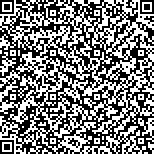| 引用本文: | 谢利,王朝阳,张迪骏,周君,司开学,张红燕,韩姣姣,崔晨茜,董丽莎,苏秀榕.宁波沿海陆源排污口蓝藻(Cyanobacteria)和裸藻纲(Euglenoidea)生物的分布特点.海洋与湖沼,2016,47(1):188-194. |
| |
|
| 摘要: |
| 采用高通量454焦磷酸测序方法对宁波沿海2个重点排污口、8个一般排污口的20个站位水样进行分析,得到2011年的3月、5月、8月和10月份各排污口蓝藻和含叶绿体单细胞生物的分布情况。研究结果表明:宁波沿海陆源排污口中含叶绿体单细胞生物数量最多,占91.857%,包括眼虫门(Euglenozoa)、绿藻门(Chlorophyta)、隐藻门(Cryptophyta)生物。其中主要为眼虫门的裸藻纲(Euglenoidea)生物占90.08%。蓝藻门的集球藻目(Synechococcophycideae)和颤藻亚目(Oscillatoriophycideae)含量相对较多,分别占5.70%和1.79%;排污口中裸藻纲生物数量季节性差异比较大,3月份、8月份数量相对较多,5月份和10月份较少,推测这类生物的数量与季节性温度变化有关;各排污口污染物、这两类生物检出量和种类有一定差异,在氮磷含量高的排污口(如S9号)其检出量并不高,推测检出量与排污口的主要污染物中氨氮含量没有直接关系,可能受氮磷比的影响。 |
| 关键词: 蓝藻 裸藻纲 454 焦磷酸测序 陆源排污口 水华 |
| DOI:10.11693/hyhz20140600180 |
| 分类号: |
| 基金项目:海洋公益性行业专项经费资助项目,201105007-4号;浙江省重大科技攻关项目,2006C13089号;宁波市科技局资助项目,2008C50027号。 |
附件 |
|
| CYANOBACTERIA AND EUGLENOIDEA DISTRIBUTION IN SEWAGE OUTLETS ALONG NINGBO COAST |
|
wangzhaoyang,xieli,cuichenqian,donglisha and hanjiaojiao
|
|
NingBo University,Beihai Environmental Monitoring Center of the State Oceanic Administration,NingBo University,NingBo University,NingBo University
|
| Abstract: |
| Water samples were collected at 20 sites from 2 major sewage outlets and 8 regular sewage outlets in Ningbo, Zhejiang in March, May, August, and October, 2011. Samples were analyzed in 454 pyrosequencing on cyanobacteria and euglenoidea distribution. The most abundant ones were from Chloroplast, occupying 91.857%, including the euglenozoa, chlorophyta, cryptophyta biological, and euglenoidea of the euglenozoa accounted for 90.08%, followed by members of Synechococcophycideae and Oscillatoriophycideae, accounting for 5.704% and 1.787%, respectively. Seasonal variation was remarkable in the amount of euglenoidea: relatively more abundant in March and August, and less in October and May, to which we believe it was due to temperature change. In addition, differences were found in the amount and type of pollutants and these two kinds of organisms. For example, in Outlet S9 where N and P contents were the greatest among all the outlets, the amount of them was not so high as we thought. Therefore, we infer that the amount of them had no direct relationship with the contents of N and P in the sewage water. The amount of them was affected by certain N/P ratios that varied among different cyanobacteria species. |
| Key words: Cyanobacteria Euglenoidea 454 pyrosequencing land-source sewage outfall detectable amount |
